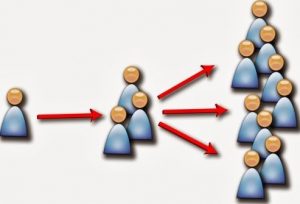
I’m occasionally asked by companies why they should hire a PR firm instead of simply hiring someone to do the work in-house. The truth is, not every company needs to hire a PR firm, but when a company does the math and evaluates their potential needs, hiring an agency is often the right call. Here’s why:
Expertise: When you hire an individual to work in-house, you’re hiring their personal experience. It’s hard for any company to find a PR professional to be an expert in everything, especially when the list of needs includes media relations, internal employee communications, crisis management, and social media. When you hire an agency, you’re getting an entire team and their collective expertise in multiple verticals. It doesn’t matter if that knowledge comes directly from your industry, all that matters is that they can evaluate a situation and identify a solution benefit your company. It doesn’t matter to Pepsi if the PR firm is using an experience learned from Toyota to solve their problems, but if an in-house person can only references the experiences their personal experiences at Coke it decreases the company’s options.
Objectivity: An outside PR firm can also be more objective. I don’t just mean the scenario of a mid-level employee afraid to tell company executives they disagree with a decision and unwilling to suggest an alternative action (we’ve seen that happen). When anyone is too close to what’s happening, it’s easy to underestimate the opportunity some stories create, or overestimate the appeal of others. PR firms deal with lots of situations and story opportunities every day. They also work with media and the public in different scenarios all the time so it’s easier to predict, and influence, how they will respond. That understanding allows them to evaluate options differently, and see more variations and options to generate results for a client.
Cost: Hiring an experienced PR professional to work in-house will cost you more than it would cost to simply hire a PR firm. Plus, you don’t pay taxes, benefits or vacation time.
Imagination: PR firms are constantly working to identify and share compelling stories and present them to reporters in a way that generates results. More experience working with different industries is actually a benefit to companies. For example, if a PR firm finds an interesting angle for a story for a technology company, that same angle might also work for a healthcare company (yet they’re approaching each story to different reporters and publications letting both stories work and not compete against one another).
Translation: PR firms, bluntly, are often better at translating a company story into one that normal people (including reporters) can digest and understand. Yes, people inside the company might think the PR firm simplified a story leaving out some “interesting tidbits,” but most of the time those “interesting tidbits” are only interesting to company employees or others that deal with it every day.
That’s not to say that a company shouldn’t have someone internal that’s responsible for coordinating with the PR firm—and that person doesn’t need to be a company Executive or the owner. As an agency owner I find the greatest partnerships and successes occur when there’s an internal go-to person that knows a lot about the company overall, is responsive to PR firm questions and tracking down answers, and able to recognize story opportunities and then share those stories with us.
Looking for more considerations when hiring a PR agency? Give us a call and let’s talk about it. We aren’t going to try and convince you that you need a PR firm. Frankly, we don’t want to work with companies that are going to have buyer’s remorse soon after signing an agreement.


